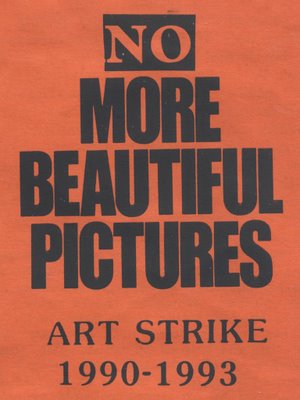_________________________________________
The inspiration behind abstract art was bold and brilliant. As Holland Cotter wrote about the invention of cubism:
The day of pure optical pleasure was over; art had to be approached with caution and figured out. It wasn't organic, beneficent, transporting. It was a thing of cracks and sutures, odors and stings, like life. It wasn't a balm; it was an eruption. It didn't ease your path; it tripped you up.
The problem is, once artists cast off the shackles of the old standards, there was no consensus on new standards by which to determine quality. By 1918, the Russian painter Malevich, seeking the ultimate essence of painting, produced an all white canvas:

Fifty years later, the American painter Reinhardt improved on Malevich by unveiling an all black painting:

For peasants like you who might question the value of this kind of art, Reinhardt explained: "A fine artist by definition is not a commercial... or applied or useful artist. A fine, free or abstract artist is by definition not a servile or professional or meaningful artist. A fine artist has no use for use, no meaning for meaning, no need for any need." Got it?
Malevich and Reinhardt were conceptually interesting, but modern art had already turned down the path toward its current dead end. Years later, High Performance Magazine, the avant garde journal of post-modern performance art, published the following goofy article on the work of performance artist Teching Hsieh:
Since July when Hsieh announced that for a year he would not do art, look at art, speak about art or think about art , we have been unable to find out any more information.... Friends speculate that the piece grew out of the frustration he experienced trying to organize a one year torch carrying piece that required a minimum of 400 participants. Even after running full page ads in the East Village Eye and other publications, Hsieh was only able to come up with around 200 interested people, whereupon he dropped the idea and announced his "no art" piece. Fallout from the piece has been that he refuses to visit old friends because they have too much art on their walls, and avoids Linda Montano, his friend and collaborator for his last year-long piece in which they were tied together, because Montano is doing a seven year "art/life" piece in which everthing she does is declared art."
Don't believe me? Look it up. Issue no. 32

Obviously, neither Malevich nor Reinhardt nor Teching Hsieh ever read a poem by Stephen Crane (1871-1900):
If I should cast off this tattered coat,Many artists have disrobed in the hope of consummating a relationship with the existential void, only to discover that the existential void ain't interested.
And go free into the mighty sky;
If I should find nothing there
But a vast blue,
Echoless, ignorant--
What then?
I agree with Clement Greenberg, one of the earliest supporters of abstract art, who wrote:
The nonrepresentational or abstract, if it is to have aesthetic validity, cannot be arbitrary and accidental, but must stem from obedience to some worthy constraint.
Without the constraints of subject matter, objective standards, technical skill, or even the limitations imposed by dealing with a physical object of any kind, the floodgates were opened to charlatans, profiteers and others who dilute the meaning and pedigree of art.
Next: the solution










